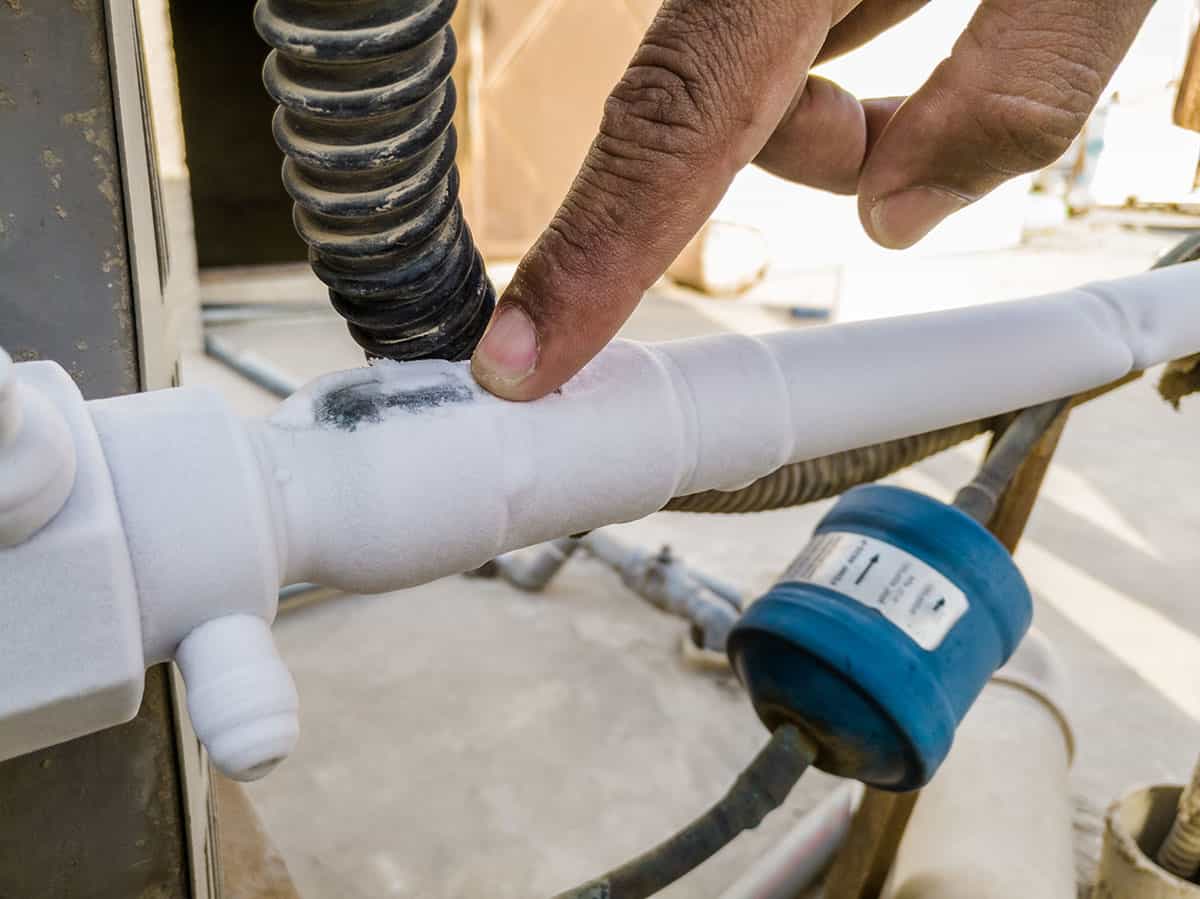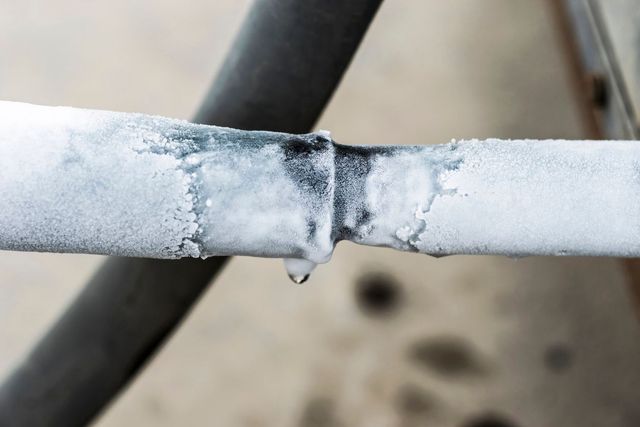What to Do If Your AC Pipe Freezes: Key Tips
What to Do If Your AC Pipe Freezes: Key Tips
Blog Article
The content below relating to Air Conditioner Frozen? How To Fix your Frozen AC Line is definitely entertaining. Check it out for yourself and figure out what you think of it.

Intro
Discovering that your a/c pipeline is iced up can be concerning, particularly throughout hot summertime when you depend on your air conditioner the most. Understanding what to do in such a scenario is critical to prevent further damage to your cooling system and ensure your comfort inside your home.
Recognizing the Causes
Numerous variables can add to the freezing of an air conditioner pipe. Recognizing these causes can aid you attend to the problem efficiently.
Absence of Airflow
One common source of an icy AC pipeline is inadequate airflow. When the air flow over the evaporator coil is restricted, it can cause the coil to drop below freezing temperature, causing ice development on the pipeline.
Low Refrigerant Levels
Inadequate cooling agent degrees in your a/c system can additionally result in a frozen pipeline. Reduced refrigerant levels can cause the pressure in the system to go down, resulting in the cold of wetness on the evaporator coil.
Winter Conditions
In cooler climates, freezing temperature levels outside can contribute to the cold of air conditioner pipes. If your AC device is not effectively protected or if there are leakages in the ductwork, chilly air can infiltrate the system, creating the pipe to ice up.
Dirty Air Filters
Dirty or stopped up air filters can restrict air movement in your AC system, bring about different problems, consisting of an icy pipeline. It's necessary to change or cleanse your air filterings system on a regular basis to make sure appropriate air flow and protect against ice build-up.
Indications of a Frozen AC Pipe
Identifying the indicators of an icy AC pipeline is crucial for timely activity.
Decreased Airflow
If you observe a considerable decrease in air flow from your vents, it could show an icy pipeline.
Ice Buildup on the Pipe
Visible ice build-up on the cooling agent line or the evaporator coil is a clear indication of an icy a/c pipeline.
Strange Sounds from the Unit
Uncommon noises, such as hissing or gurgling, originating from your AC device can signify that there's ice existing on the pipeline.
Immediate Actions to Take
When confronted with a frozen a/c pipe, it's essential to act quickly to avoid more damage to your air conditioning system.
Shutting off the AC
The first step is to turn off your ac system to prevent the system from running and exacerbating the concern.
Looking for Blockages
Check the area around the indoor system for any type of blockages that might be blocking airflow, such as furnishings or drapes.
Defrosting the Pipe
You can utilize mild techniques like putting towels soaked in warm water around the icy pipe to aid thaw it slowly.
Safety nets
Taking preventive measures can help avoid future events of an icy a/c pipeline.
When DIY Methods Fail
If your attempts to thaw the pipeline or address various other concerns are unsuccessful, it's time to hire a specialist.
Relevance of Hiring a Professional HVAC Technician
A certified HVAC technician has the competence and devices necessary to identify and fix concerns with your AC system safely and properly.
Routine Maintenance Checks
Schedule regular maintenance talk to a specialist HVAC technician to guarantee that your air conditioner system is running effectively.
Transforming Air Filters
On a regular basis replace or cleanse your air filters to stop air flow limitations and preserve optimum efficiency.
Shielding Exposed Pipes
If your a/c pipelines are subjected to cold temperatures, take into consideration protecting them to avoid cold throughout winter season.
Looking For Professional Help
If DIY techniques fail to settle the issue or if you're uncertain regarding just how to proceed, it's best to look for help from a certified HVAC service technician.
Final thought
Handling an icy air conditioner pipeline can be a frustrating experience, however knowing just how to respond can aid lessen damages and restore convenience to your home. By understanding the causes, recognizing the indications, and taking timely action, you can effectively address the problem and protect against future events.
G UP? HOW TO FIX IT?
It happens all over America. And the rest of the world probably. It’s the hottest day ever and for some darn reason your AC isn’t cooling the house. You fiddle with the thermostat to try and fix the problem. Nada. All you can do now is go outside and check the AC unit. You make your way there and find your air conditioner unit is frozen! But how?
In this post we’ll cover how you can tell that your air conditioner has frozen (other than the obvious reasons), what could have caused the freeze, and some of the things you can do about your AC freezing up. And if you have a frozen heat pump condenser, read our blog about it to learn what to do! But remember, it is always best to avoid your AC freezing up with an AC tune up. And if you are moving into a home, it's critical to get HVAC inspection so that you are aware of an AC problems before you move in.
Keep reading and you may be able to fix the frozen AC yourself. If you can’t, call an HVAC specialist. If you live in Maryland, call SuperTech HVAC for AC repair. We’ll take care of it.
How Does An Air Conditioning Unit Work?
How you probably imagine an AC works is wrong. Contrary to popular belief, an AC system does not inject cool air into a building. Instead, it removes the heat from inside and transfers it outside. Cool huh? (Pun intended).There are 4 major components among the 3 stations of an air conditioning system: the evaporator coil, the compressor, the condenser, and the refrigerant – a special chemical that links everything together through a closed loop system.
Station 1:
Warm indoor air is sucked into the return vent, through a filter, and blows over the evaporator coil. The heat is absorbed into the cold refrigerant, turning it from liquid to gas. The air, which is now cool, is blown back into the home to areas that your thermostat, i.e. you, has decided.
Station 2:
The refrigerant makes its way outside the house to the compressor, which squeezes the warm refrigerant, raising its gaseous temperature even more.
Station 3:
When the super hot vapor refrigerant reaches the condenser, the last step, the heat is expelled and absorbed into the outdoor air. The refrigerant instantly cools, which changes it from gas back to liquid form. The cold liquid refrigerant is now ready to return to station 1 and repeat the process.
Is Your AC Freezing Up? Here Are The Signs:
As you may have guessed, your air conditioner unit freezing up on a hot day is not normal.
If this happens, there's no need to panic. Often the issue can be solved with a little troubleshooting. If the AC unit is left frozen for too long however, you may find yourself with a bigger problem.
First things first, how do you know your AC is frozen?
Well, the obvious sign is the ice on your refrigerant line-set pipe. Simply check between your outdoor AC unit and your home's exterior wall to see whether your AC line frozen.
You might also have a frozen evaporator coil. This one's not as easy to check. You'll need to open a panel on the indoor unit to inspect. Don't do this unless you're handy. If you aren't, call an HVAC pro like SuperTech HVAC or you may damage something in the process.

I came across that blog posting about How can I fix an air conditioner’s frozen pipe? when browsing on the search engines. Do you know about somebody else who is interested in How can I fix an air conditioner’s frozen pipe?? Please feel free to promote it. I love reading our article about Air Conditioner Frozen? How To Fix your Frozen AC Line.
Try Here Report this page